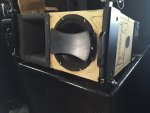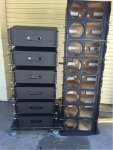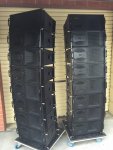I have started work on a small but extremely high quality line-array. I got sick of manufacturers say no you can't use your Powersoft amplifiers and Lake processors, you have to use our special (re-badged and inflated priced) amplifiers. ... so I decided to build my own.
Its probably beyond what I would call a DIY project but I though some people may be interested.
Here is a picture of my rough experimental test box and the most stunning impulse responses I have ever seen.
Its probably beyond what I would call a DIY project but I though some people may be interested.
Here is a picture of my rough experimental test box and the most stunning impulse responses I have ever seen.

Attachments
Last edited:



